Explanation of Black Ants (Dolichoderus thoracicus Smith)
Understanding Ants
Ants are a type of insect with a large number of species and individuals. The number of ants on the earth's surface comprises more than 12,000 species, but only about 7600 species of 250 genus have been named and described. The greatest ant diversity is in the tropics. Ants are widely distributed all over the place except in the oceans, ranging from the Arctic region to the north to the polar regions in the south (Daly et al., 1978).
Ants hold many roles in nature, both beneficial and adverse, depending on the environmental conditions in which they live. According to Anonymous (1998), ants are very useful in life, among others:
Ants nest on the ground makes the air can get into the ground
Some types of ants feed on insect pests (pests)
Plant-eating ants help the environment by eating disturbing plantsAnts fertilize the soil when processing its food
Ants can act as decomposers
Ants help spread the seeds
Black ants Dolichoderus thoracicus Smith is an ant species whose distribution area is widespread in Southeast Asia, especially in areas with altitudes less than 1,300 meters above sea level. Black ants are commonly found in citrus, cocoa, coffee, and mango (Kalshoven, 1981). Black ants nests are usually above ground (piles of dry leaf litter) and also coconut leaf midrib (if cocoa is grown with coconut) or in other dry and dark places not far from food sources (Way and Khoo, 1992 ).
D. thoracicus black ants usually come out of their nests in the morning and evening when the temperature is not too hot. Ants will go to the tops of the plants to get the sunlight while running their activities. However, during the day when the temperature of the hot air, the ants will hide in places protected from direct sunlight, such as inside the nest, behind the foliage, in the soil, and others (Elzinga, 1978 in Rahmawadi, 1997 ).
D. thoracicus black ants belong to the Hymenoptera Order (clear winged insects) and enter the Familia Formicidae. According to Kalshoven (1981), the classification of D. thoracicus black ants is as follows:
Phylum: Arthropods
Class: Hexapoda
Order: Hymenoptera
Family: Formicidae
Sub families: Dolichoderinae
Genus: Dolichoderus
Species: Dolichoderus thoracicus Smith
Black ants Dolichoderus thoracicus live in a social organization made up of a number of individuals and form a society called colony. Ant colonies consist of groups called caste. Black ants consist of several castes, namely: queen, stud, and worker. Worker ants are divided into two, namely workers and soldiers. Ant castes have different tasks, but still interact and work together for the sake of their survival (Son, 1994).
A. Queen Ant
The queen ant has a larger body than the rest of the colony, about 4.9 millimeters in length, the components of the eye develop perfectly, and has a flying wing mechanism that has evolved well since entering the imago phase. In one colony there is usually more than one queen. At every 100 - 200 worker ants there is usually a queen (Kalshoven, 1981). The queen ant is more common in the rainy season than when it was drought. This is because in the rainy season there are many sources of food and plants to make nests that support the growth of the colony (Mele and Cuc, 2004).
B. Male Ant
Male ants are smaller in size than queens, blackish in color, have antennae and wings like queens, and eye components have developed flawlessly. Male ants are more numerous than queens, but their lifetime is short. Male ants are produced only at certain times of the year, in the mating season and after marriage with the queen, male ants will usually die (Anonymous, 1988).
C. Workers Ants
Worker ants have recognizable traits, lengths of 3.6 to 4.1 millimeters, brown legs, thorax reduces, and the mechanism never flies (no wings), the front abdomen shrinks with one or two bumps in the direction Dorsal, brown antenna and geniculate type, ie the first segment lengthwise and the next segment short-angle to form the angle with the first segment (Samiyanto, 1990).
D. Ants Soldiers
Worker ants vary in size. The worker's generation of queen eggs that first built their body size nests was smaller than those who were born thereafter. In this case comes two different worker castes, which have large body sizes called soldiers and whose size is small to worker. The soldier ant has a large head, consisting of a sturdy chitin and a strong mandibular upper jaw. The soldier's job is to fight and protect the nest. In addition, soldier ants also help workers whose bodies are small to transport food into the nest (Anonymous, 1988).
Black Ant Life Cycle D. thoracicus
Ants through the process of development of different body shapes from egg to adult. This process of change of form is called metamorphosis. D. thoracicus black ants include insects with perfect metamorphosis or holometabola metamorphosis. Ant life cycle is: egg, larva, pupa, and imago or adult (Karindah, 1992).
A. Egg
Egg ants are white, oval, 1-1.5 millimeters long, and the egg phase length is 14 days (Cadapan et al., 1990). Eggs are produced 10-20 days after copulation between queens and male ants. The production of black ant eggs averages 1,300 - 1,700 grains per year. The eggs are placed in the nest in the holes of trees or behind the leaves (Elzinga, 1978 in Rahmawadi, 1997).
The ant eggs in the nest are treated by worker ants. Worker ants will move the eggs from the nest if the condition of the nest turns moist or worsens, and returns it to the hive if it is normal. This is done to avoid fungal infections and external disturbances such as predators, ant antagonists, and others. The eggs are moved to different rooms within the hive based on the temperature in each room in order to speed up the hatching time (Anonymous, 1988).
B. Larvae
The eggs of the next ants will hatch into larvae. The ant larvae look like maggots, white, the head consists of 13 segments, and the length of the larval phase is 15 days (Cadapan et al., 1990). Black ant larvae get feed in the form of saliva from the quail saliva gland, from the fat reserves of the queen's flying muscles, or if the colony already has workers then fed by its workers (Samiyanto, 1990).
Larvae usually eat all the time because they have to store enough energy to enter the pupa phase. The workers feed the larvae with honey dew and small insects or if food is difficult to obtain, the larvae will eat unencedic eggs (Anonymous, 1998).
Worker ants separate the larvae into groups according to body size and age. Workers will give more attention if there is a large individual, because usually the individual will be a queen or male ants. Separation of larvae in similarly sized groups ensures that each larva gets adequate attention and food (Anonymous, 1988).
C. Pupa
An ant larvae will then turn into a pupa. Black pupa ants are white, not wrapped cocoon like most other insects, and the old pupa phase is 14 days. At the time of pupae, black ants experienced periods of non feeding or non-feeding periods (Cadapan et al., 1990).
D. Imago
The last phase in ant metamorphosis is imago. Imago is black, organs begin to function, and begin to separate according to their own caste. The colony will produce more workers than the other castes in the early colonies. This is done to alleviate the task of the queen because most of the colony's activity will be carried out by the workers. The life cycle of black ants is about 40 days and the ants can survive for 2-3 years (Cadapan et al., 1990).
All this paper I quote : Source
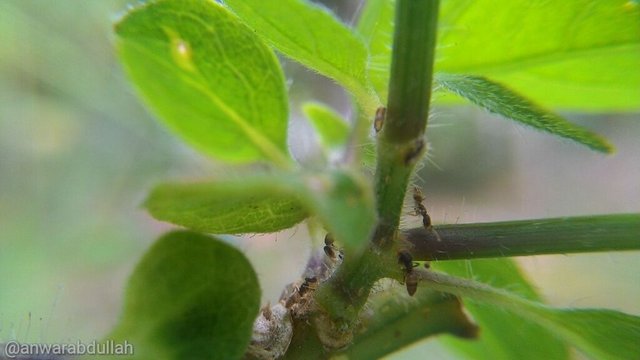
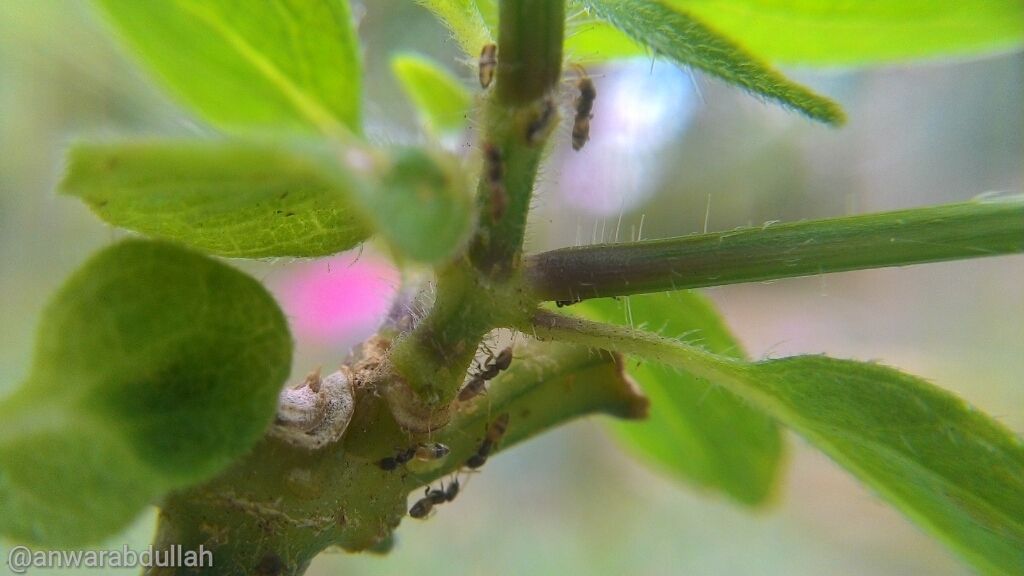
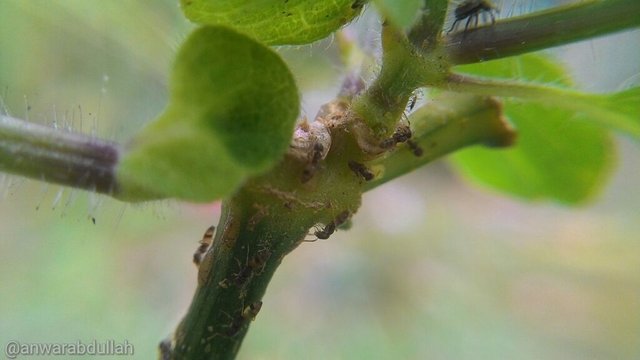
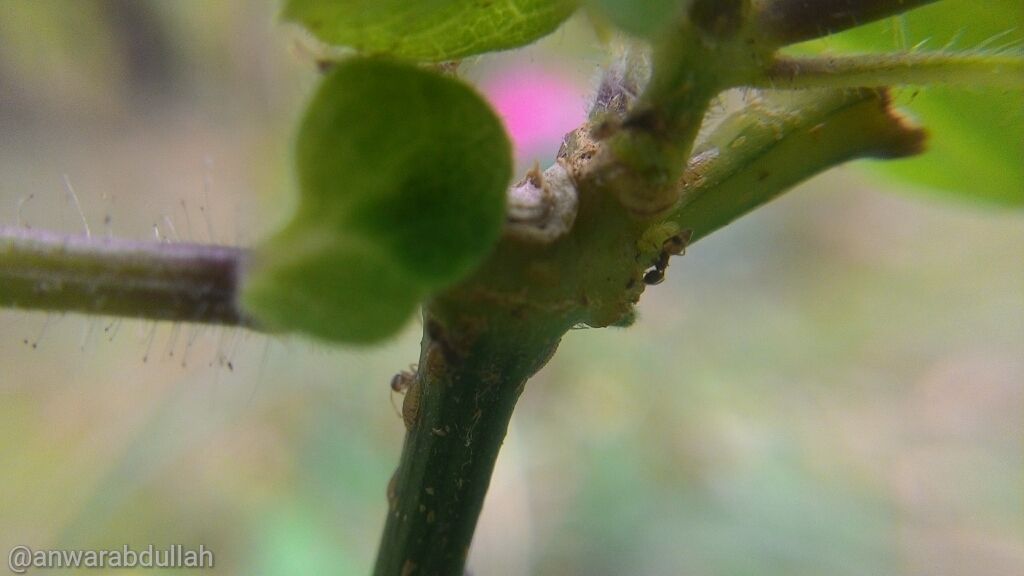
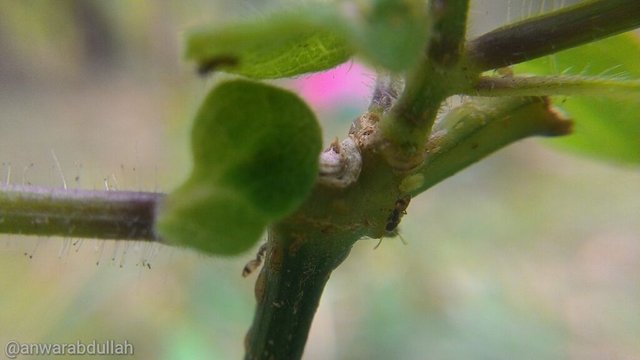
Thanks for sharing good post, continue.... @anwarabdullah
Okey my friend @arjunmartavela
Be careful with ants, usually ants are dangerous.
It is true, elephants may be afraid of ants @azirgraff . :))
Nice picture
Thanks you @watiy
Actually, I have more the impression that you have translated the quoted sources with a tools like google translation. That is not nice with respect to the original author of the article (copyrights and all of that).
Writing something on your own is better (on the article you read), and in general better rewarded on steemit. Thanks in advance for your consideration!
I am also grateful for your suggestion, @lemouth